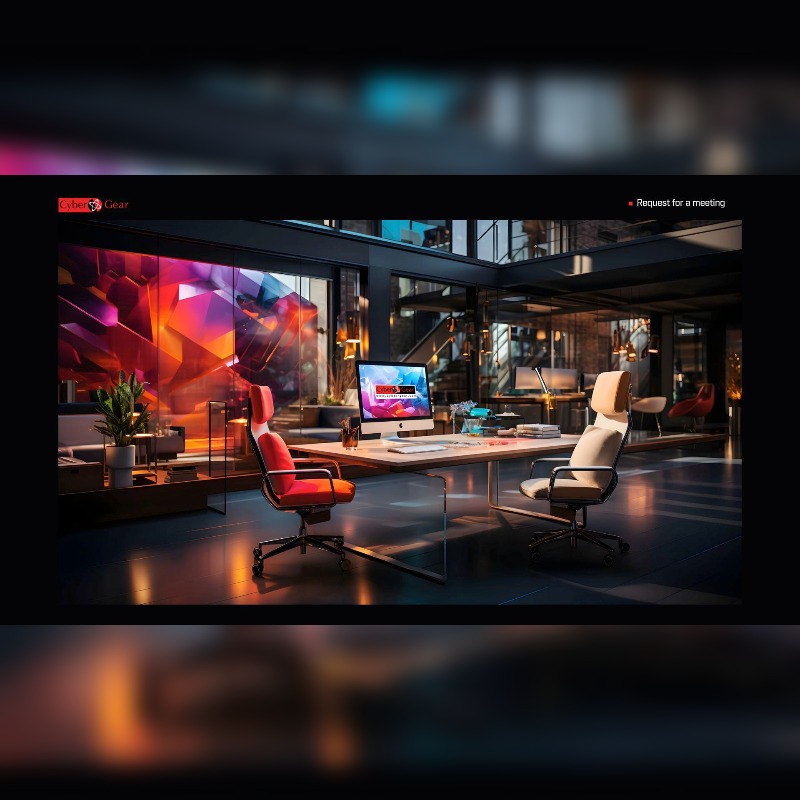
Designing a Smart Website with AI Tools
In today’s fast-paced digital world, a website is more than just an online presence, it is often the first touchpoint between a brand and its audience. With user expectations rising and competition intensifying, businesses need websites that are not only visually appealing but also intelligent, adaptive, and user-friendly. This is where Artificial Intelligence (AI) is revolutionizing web design.
According to Sharad Agarwal, CEO of Cyber Gear, “AI tools are now empowering businesses, designers, and entrepreneurs to build smart websites that engage visitors, personalize experiences, and drive measurable results.”
The Shift from Traditional to Smart Web Design
Traditional web design often relied on manual coding, template-driven layouts, and static content. While effective in the past, these methods fall short in meeting the demands of modern users who expect personalization, real-time updates, and seamless navigation across devices.
Smart websites, on the other hand, use AI-powered technologies to analyze user behavior, adapt content dynamically, automate design elements, and optimize performance. The integration of AI reduces guesswork, speeds up development, and creates more meaningful interactions.
Key AI Tools for Smart Website Design
- AI Smart Website Builders
It is important to hire an AI savvy web development company to build your smart website. Businesses that embrace AI in web design can deliver personalized, efficient, and engaging experiences while saving time and resources. From AI website builders and chatbots to advanced personalization engines, the possibilities are vast and growing.
- Content Generation and Optimization
AI writing assistants such as ChatGPT, Jasper, and Copy.ai help generate website copy, blogs, and product descriptions optimized for SEO. They ensure tone consistency, improve readability, and suggest relevant keywords. This eliminates writer’s block and saves valuable time.
- Personalization Engines
Personalization tools like Dynamic Yield, Optimizely, and Adobe Target use machine learning to adapt content, product recommendations, and calls-to-action based on user behavior. For instance, an e-commerce store can display different products to returning customers compared to first-time visitors, enhancing conversion rates.
- AI-Powered Chatbots
Integrating chatbots such as Intercom, Drift, or ManyChat transforms websites into interactive platforms. These bots provide instant support, answer FAQs, recommend products, and even collect leads 24/7. Unlike static help pages, chatbots learn from user interactions to improve their responses over time.
- Design Assistance Tools
AI-driven design platforms like Canva with AI features, Uizard, and Khroma suggest layout ideas, generate brand-specific color palettes, and automate UI/UX design elements. Designers can experiment with multiple prototypes without starting from scratch, ensuring faster iteration cycles.
- Search and Navigation Optimization
AI-powered search tools such as Algolia or ElasticSearch improve website navigation by offering predictive search, auto-correct, and personalized results. Users find what they’re looking for faster, resulting in higher satisfaction and retention.
- Analytics and Testing
AI analytics platforms like Google Analytics 4, Hotjar, and PaveAI provide deeper insights by predicting user behavior and recommending design or content improvements. A/B testing tools powered by AI can automatically allocate traffic to the best-performing design variations.
Benefits of Using AI in Web Design
- Speed and Efficiency – AI reduces design and development time significantly, allowing businesses to launch websites quickly.
- Personalization – Each visitor can experience a unique journey tailored to their preferences.
- Cost Savings – Automating repetitive tasks lowers dependency on large design and content teams.
- Scalability – AI-driven sites can adapt as businesses grow, without the need for complete redesigns.
- Improved SEO – AI tools analyze search trends, optimize content, and ensure better rankings on search engines.
- Enhanced User Experience – Predictive search, chatbot support, and intuitive design make navigation smooth and engaging.
Steps to Design a Smart Website with AI
- Define Your Goals – Identify whether your website’s main purpose is e-commerce, lead generation, or brand awareness.
- Choose the Right AI Tools – Select a website builder, personalization engine, and chatbot based on your business size and audience.
- Leverage AI for Content – Use AI writing assistants for SEO-friendly blogs, product descriptions, and calls-to-action.
- Incorporate Personalization – Tailor landing pages, recommendations, and promotions to different visitor segments.
- Automate Testing and Analytics – Continuously refine the site using AI-driven insights and real-time performance tracking.
- Focus on UX and Accessibility – Ensure your AI-driven site is mobile-friendly, fast, and inclusive for all users.
Future of AI in Web Design
The role of AI in web design is only set to grow. Emerging technologies like Generative AI for UI design, voice-enabled navigation, and AI-driven cybersecurity will redefine the digital experience.
Designing a smart website with AI tools is no longer a futuristic concept, it is a necessity in today’s digital-first economy.
As AI continues to evolve, smart websites will become the standard, helping brands stay ahead in a highly competitive online world. Whether you are a startup or an established enterprise, integrating AI into your web design strategy ensures that your digital presence is not only intelligent but also impactful.






